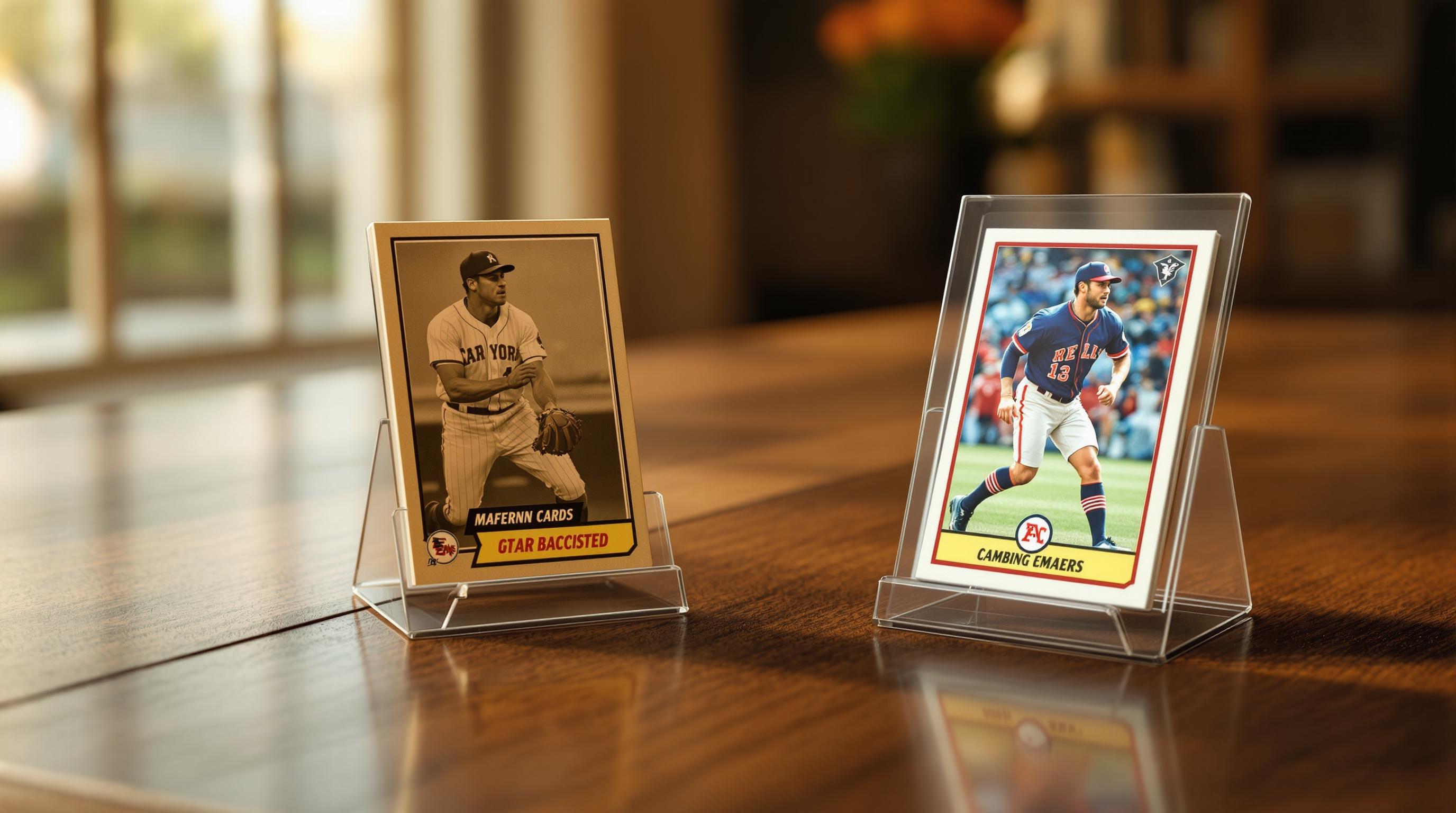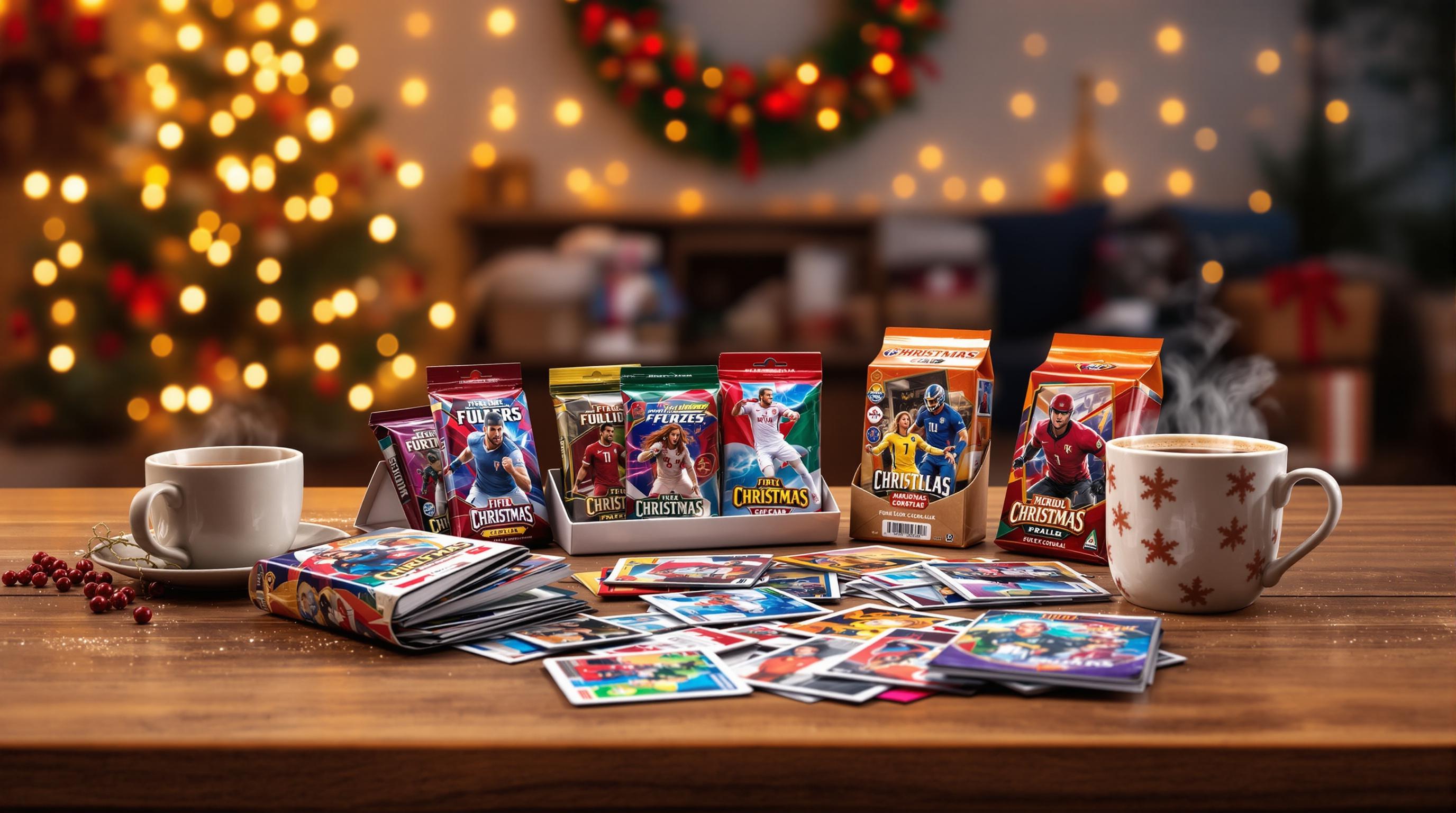Card popularity directly affects trading card values. Popular players, rare features, and social media buzz can drive prices up, while market trends, economic factors, and timing also play key roles. Here's a quick summary:
- Player Performance: Achievements like Shohei Ohtani's or Ronald Acuña Jr.'s seasons boost demand.
- Scarcity: Rare cards, autographs, and vintage items hold steady or increase in value.
- Social Media: Viral moments and collector communities rapidly shift trends.
- Market Timing: Off-seasons or market corrections offer buying opportunities.
Modern cards tend to fluctuate more, while vintage cards are steadier in value. Understanding these factors can help collectors make smarter decisions and build better collections.
Why Investing in Sports Cards Is Taking Off
What Card Popularity Means for Collectors
Card popularity shows how much demand and interest specific cards or sets generate among collectors. This insight is key for making smart investment choices.
Factors That Influence Card Popularity
A player's performance often drives card popularity. For instance, Jackson Holliday's cards have gained attention due to his minor league achievements and family ties in baseball. Cards with rare features, high grades, or historical importance - like pre-WWII issues - are also highly desired because of their scarcity and condition [2].
Timing in the market also plays a role in shaping trends, as highlighted below:
| Time Period | Market Trend | Impact |
|---|---|---|
| 2024 Q1 | Market Adjustment | Modern cards down 0.5%, vintage cards up 1% [3] |
| 2022-2024 | Auction Volume | 60% drop from peak levels [3] |
How Popularity Affects Card Prices
External influences, like stimulus spending during COVID-19, rising interest rates, and changing collector preferences, have all impacted card values. Social media and online communities now have a big effect on popularity, with live discussions about players quickly shifting market trends [1].
Modern and vintage cards respond differently to these shifts. Modern cards often fluctuate more and are sensitive to current events. In contrast, vintage cards usually hold steadier values, especially when they’re in excellent condition [3].
Grasping these dynamics can help collectors predict changes in demand. The next section will dive deeper into the main forces behind card popularity.
Main Drivers of Card Popularity
The value of trading cards depends on three main factors that influence collector interest and market trends.
Impact of Player Performance
A player's achievements can instantly affect card values. For example, Ronald Acuña Jr.'s record-breaking 2023 season caused a surge in demand for his cards [1]. The effect of performance varies depending on a player's career stage:
| Career Phase | Value Impact | Market Response |
|---|---|---|
| Prospect/Rookie | Based on potential | Quick reactions to early success |
| Peak Performance | Driven by achievements | Steady value growth |
| Post-Career | Legacy-dependent | Stable, history-based pricing |
Scarcity and Special Editions
Cards that are harder to find or have unique features, like autographs or jersey patches, tend to fetch higher prices. These elements create a stronger personal connection between collectors and the players, boosting their appeal [2]. Factors that increase a card's value include:
- Autographed cards
- Game-used memorabilia cards
- Limited edition releases
- Vintage cards in perfect condition
Social Media and Online Communities
Platforms like social media play a big role in driving card popularity. When players hit major milestones or engage directly with fans, it can spark a wave of interest among collectors. Online communities amplify these moments, quickly affecting card values and market trends [1].
Digital platforms influence collecting in several ways:
- Sharing updates on player achievements
- Broadcasting real-time price changes
- Building buzz around upcoming releases
- Creating viral moments that fuel demand
These factors are critical for spotting cards with high collector interest, which we’ll dive into next.
sbb-itb-0db97a5
How to Identify High-Demand Cards
To spot cards with strong potential value, it's essential to understand market dynamics and keep an eye on key indicators. Here are some strategies to help you identify high-demand cards before they hit their peak.
Tracking Market Trends
The card market is highly responsive to real-time events like player performance and industry news. Thanks to modern tools, monitoring trends has become easier than ever. Here's what to focus on:
| Trend Type | What to Monitor | Impact on Value |
|---|---|---|
| Player Performance | Stats, achievements, injuries | Immediate price changes |
| Market Data | Auction volumes, price shifts | Long-term value trends |
| Social Media | Viral moments, collector buzz | Short-term demand spikes |
| Industry News | New releases, retirements | Sentiment and market shifts |
While trends give you a broad overview, ensuring your cards are graded and authenticated is key to maintaining their value in a competitive market.
The Role of Grading and Authentication
Services like PSA and Beckett play a critical role in verifying both the value and authenticity of cards [2]. This becomes especially important during market corrections when buyers tend to be more selective. A professionally graded card often commands higher trust and value.
Building a Balanced Collection
A well-rounded collection can reduce risks while boosting potential returns. With auction volumes dropping since 2022, having a strategic approach to collecting is more important than ever.
- Diversify Your Portfolio: Combine cards of established stars with those of emerging prospects. Focus on rarity and condition, like pre-WWII cards in excellent shape, to ensure long-term value [2].
- Leverage Seasonal Patterns: Timing matters. Off-season periods often bring price dips, offering a chance to grab promising cards at more affordable rates [1].
Using Popularity to Boost Your Collection
With the right timing and smart use of resources, you can make the most out of your card-collecting investments.
Buying When Demand is Low
Experienced collectors often make their best purchases during market downturns. For instance, the recent 23% year-over-year drop in six-figure auction volumes [3] opens up some interesting opportunities. Off-seasons tend to bring down prices and reduce competition, making it a great time to focus on cards from well-established players. Pre-seasons are perfect for picking up prospect cards before they see a surge in value, while post-market corrections let you snag high-quality cards at adjusted prices.
Timing matters, but building connections within the collector community can give you even more of an edge.
Joining Collector Groups
Participating in forums or social media groups is a great way to stay ahead. You can pick up trends, learn from seasoned collectors, and even find exclusive deals. These networks often share valuable insights about player performance and card condition, helping you make smarter decisions.
Exploring Local Card Shops
Local card shops, like those listed on Card Shops List, can be goldmines for rare or sought-after cards. Building relationships with shop owners or dealers can give you early access to new arrivals and insider tips on trends. Card Shops List connects you to local stores offering rare finds, trading opportunities, and even grading services. These shops are excellent resources for growing your collection with a more strategic approach.
Conclusion: Understanding Popularity to Make Better Choices
Grasping card popularity plays a big role in making smart choices as a collector. The market is always changing, bringing both hurdles and opportunities along the way.
To succeed, collectors need solid tools and a clear plan. Grading services help confirm a card's authenticity and build trust, especially when dealing with high-value items. Vintage cards tend to hold steady, while modern cards can be more unpredictable - highlighting the importance of spreading out investments.
Here are a few key strategies for building a strong collection:
- Keep an eye on player achievements and career highlights
- Use authentication services to confirm the condition of your cards
- Connect with collector communities to stay informed about market trends
- Explore resources like Card Shops List to find trusted dealers
Digital platforms have reshaped how cards are traded and tracked. These tools make it easier to follow demand trends and market shifts, but they also mean tougher competition for sought-after cards. Social media and online marketplaces offer real-time updates, giving collectors an edge when it comes to spotting trends.
Popularity isn’t just about current demand - it also hints at untapped opportunities. Whether you’re into vintage baseball cards or the latest trading card games, understanding how popularity impacts value can help you make smarter decisions. With this knowledge, you can adapt to market changes, seize opportunities, and build a collection that’s both enjoyable and potentially rewarding.
FAQs
What determines the value of trading cards?
The value of trading cards depends on several factors:
- Rarity: Limited-edition cards, especially older ones like pre-WWII issues, tend to be more valuable due to their scarcity [2].
- Condition: Cards in better condition fetch higher prices. Professional grading services like PSA and Beckett assess cards on a standardized scale, and higher grades can significantly increase a card’s worth [2].
- Player Performance: A player’s achievements can cause dramatic changes in card value. For example, Shohei Ohtani’s standout performances have driven his card prices to new highs [1]. Milestones like record-breaking stats or major awards often lead to quick price increases.
- Market Trends: The broader market also plays a role. Recent data shows vintage cards gaining slightly (+1%), while modern cards have seen a small decline (-0.5%) [3]. According to Altan Insights, vintage and modern cards react differently to the same market shifts.


